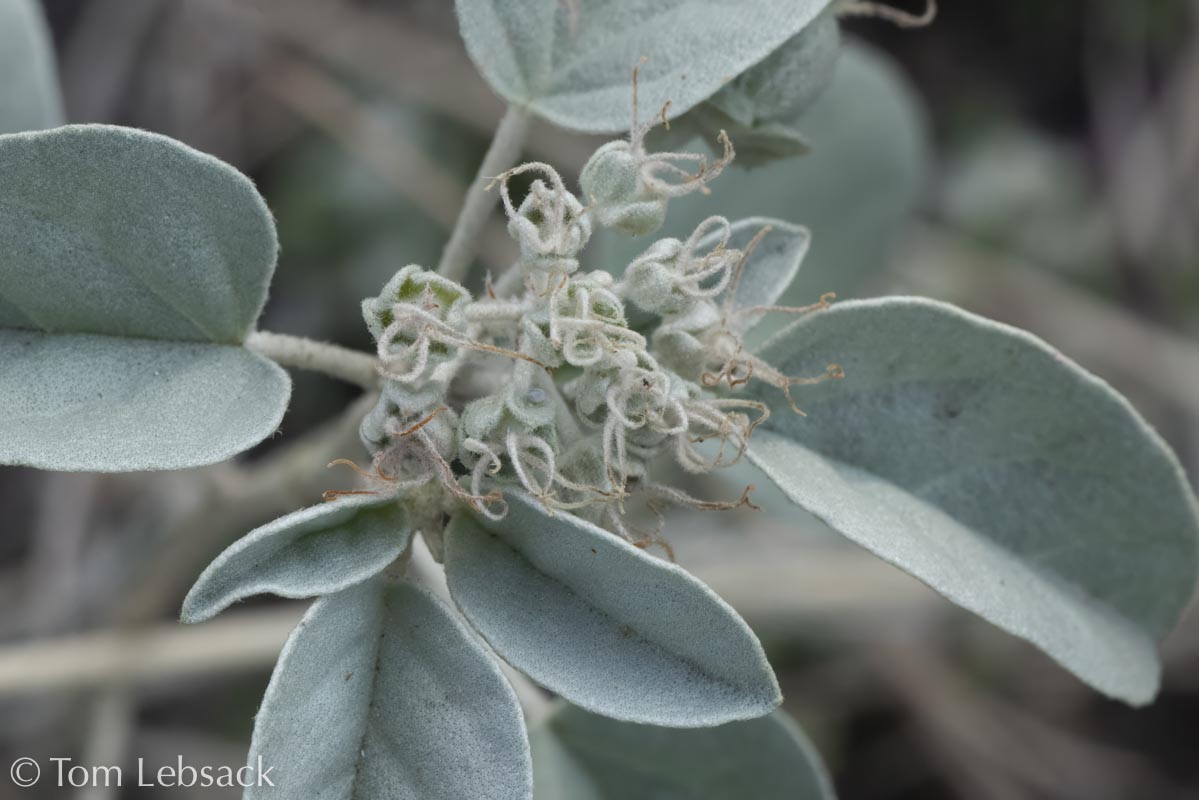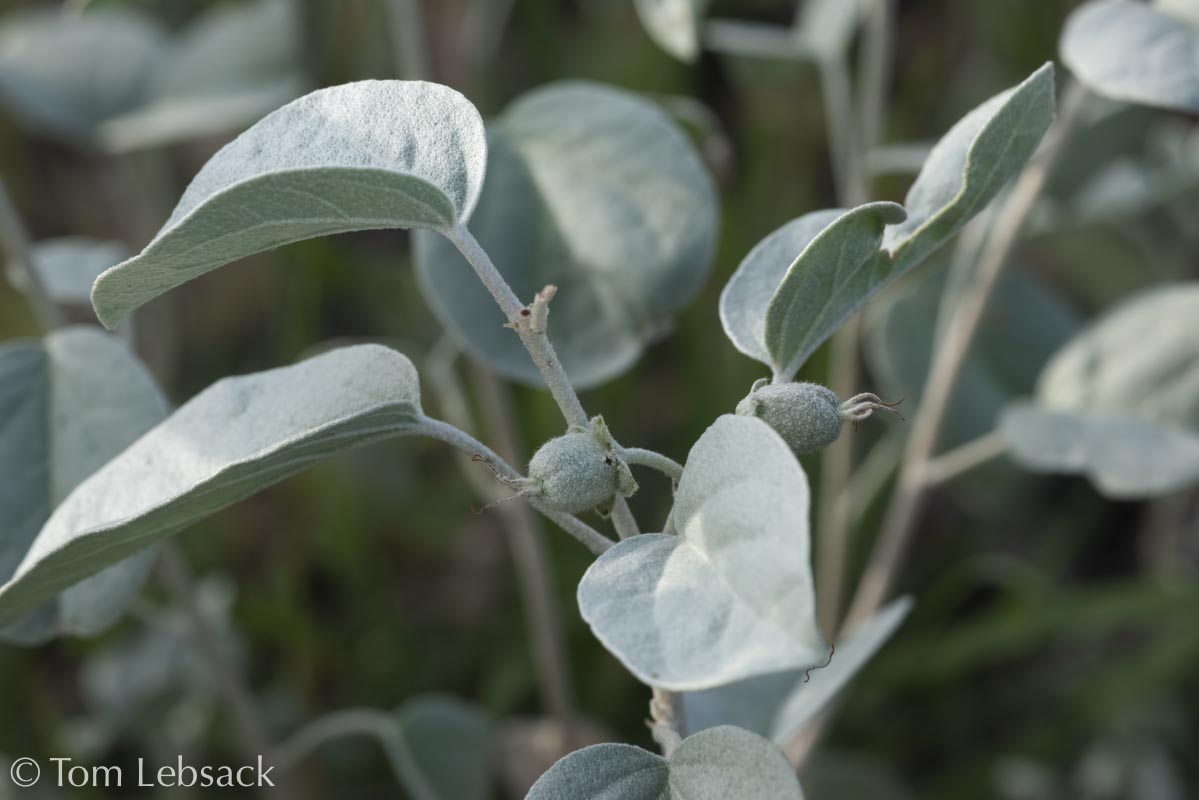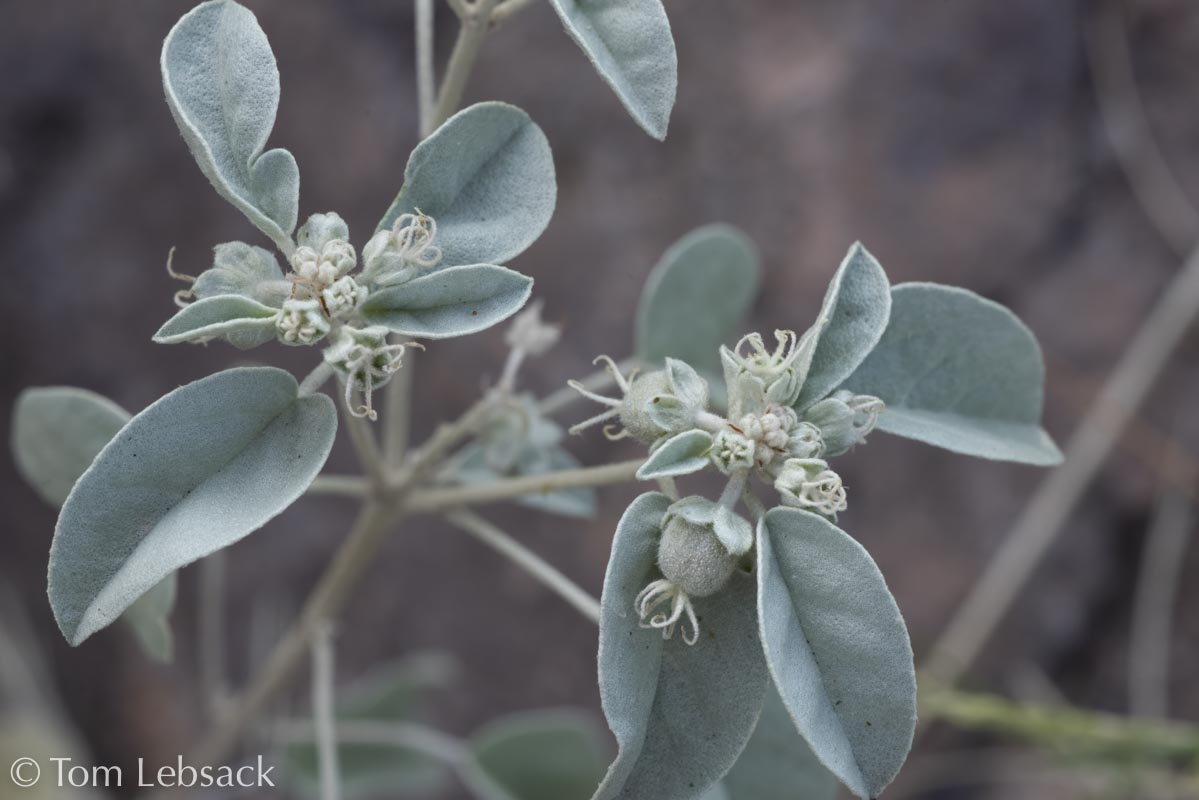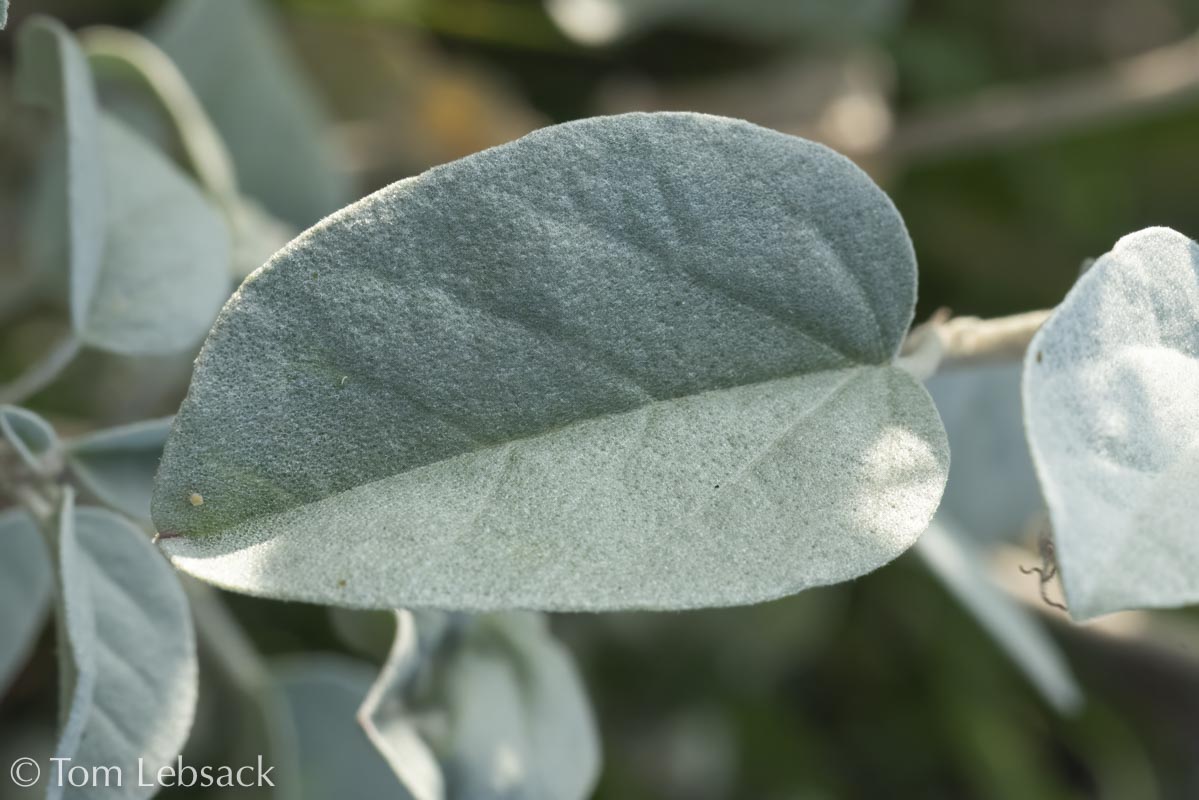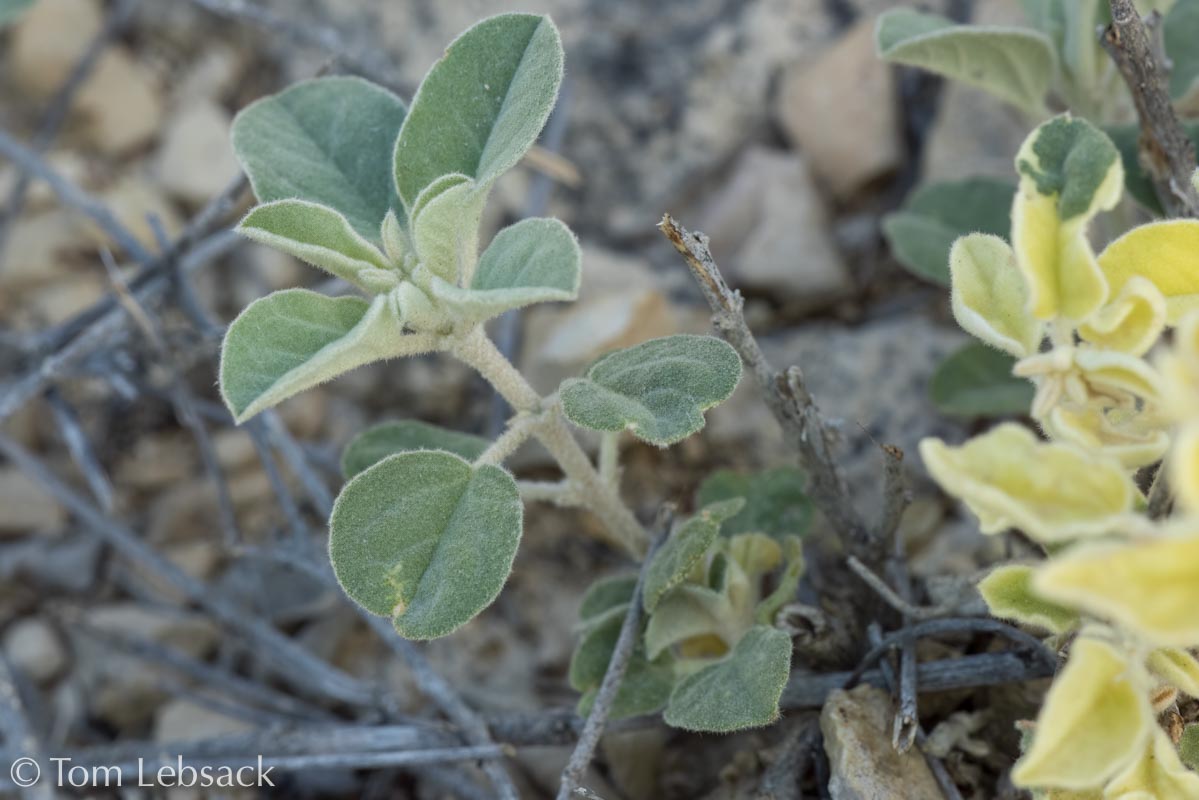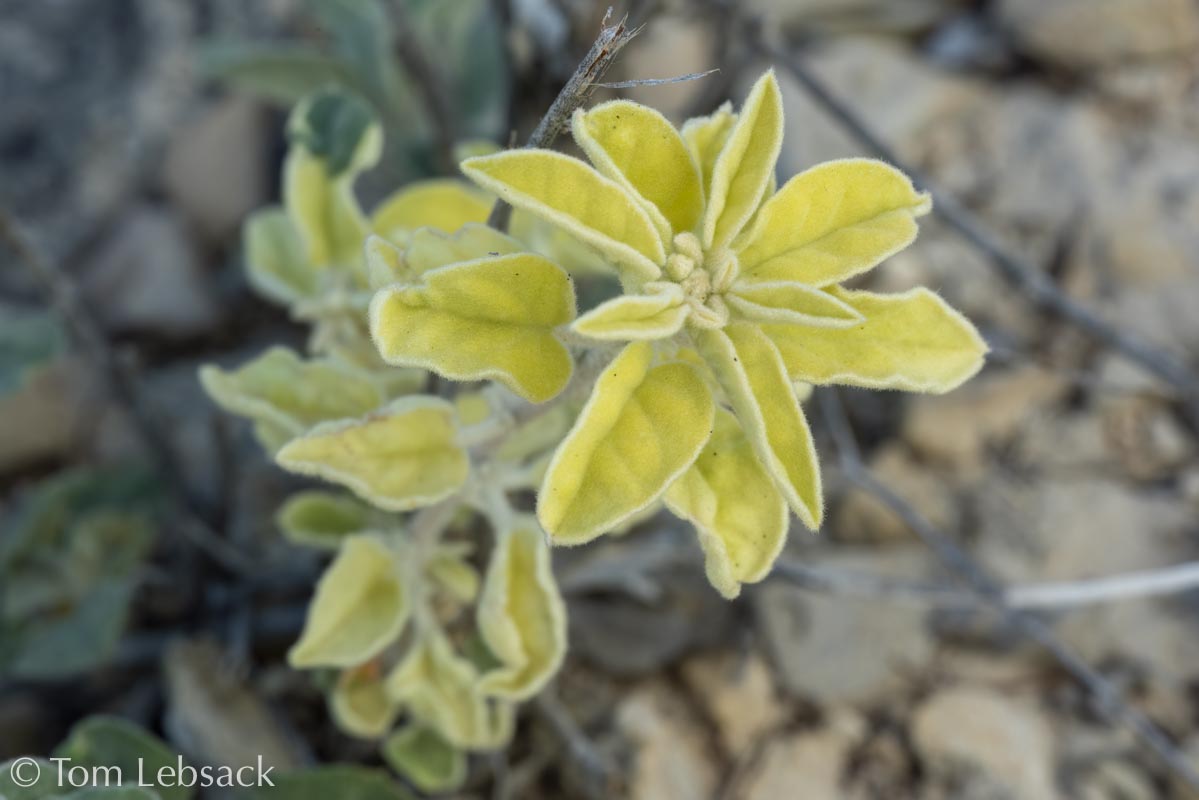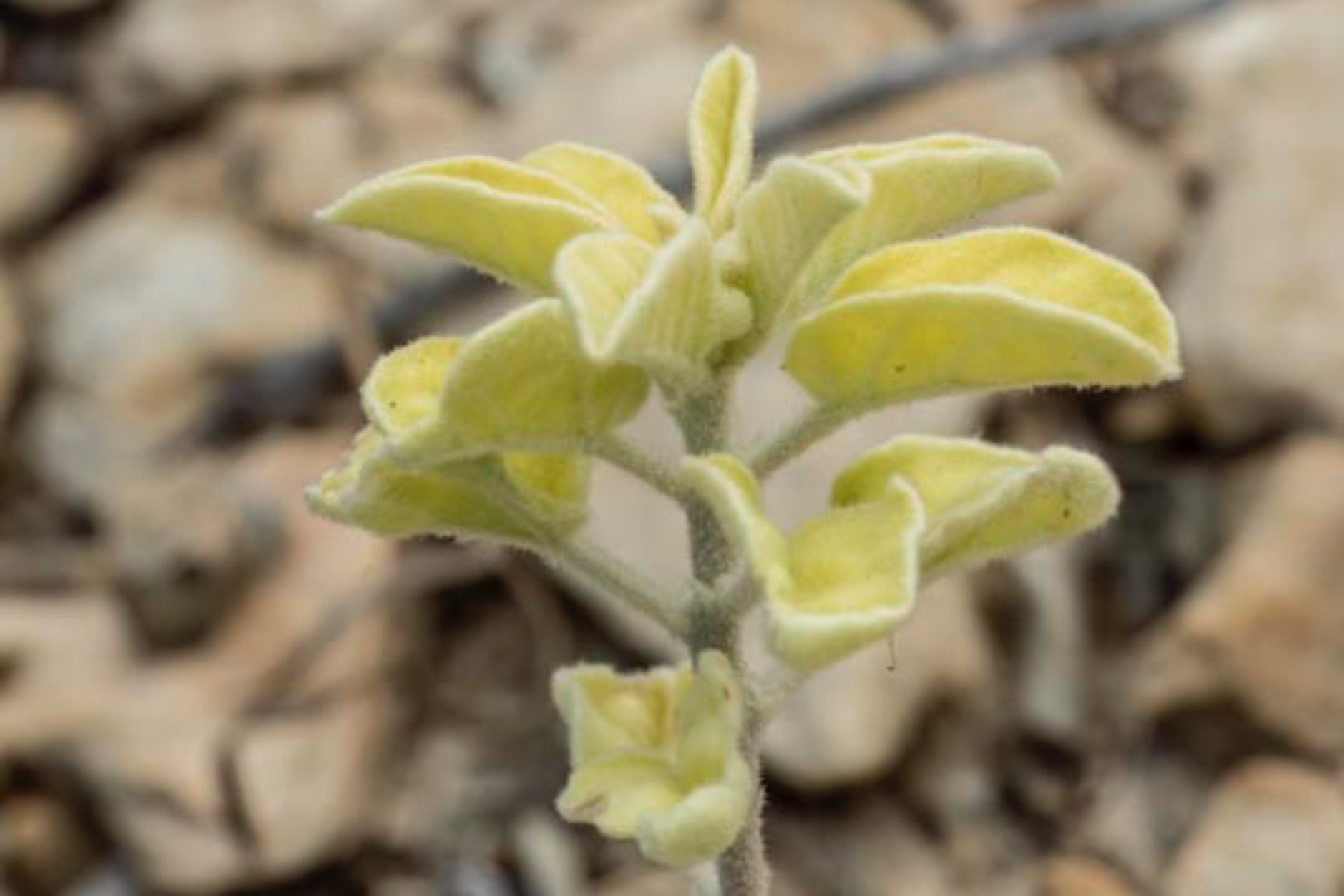Texas Wildbuds
Croton pottsii var. pottsii
(Leatherweed)
| Scientific Name | Croton pottsii var. pottsii | USDA PLANTS Symbol | CRPOP |
| Common Name | Leatherweed | ITIS Taxonomic Serial No. | 527546 |
| Family | Euphorbiaceae (Spurge) | SEINet Reference |
Click Here |
| Description | Habitat: Desert grasslands and scrub. Plant: Perennial subshrub 4 to 20 inches tall with several main, branched stems from a woody base, stems and leaves covered with small, shaggy hairs. Leaves: On petioles 0.2 to 0.9 inches long; upper leaf blades ovate-elliptic, lower blades rounder; blades 0.6 to 1.8 inches long and 0.2 to 0.7 inches wide and margins entire, with rounded to acute tips; both surfaces pale to grey-green and softly stellate-hairy. Inflorescence: Small blossoms in short racemes 0.2 to 1 inch long, at the tops of plants and emerging from leaf axils; staminate (male) flowers with 4 or 5 very short sepals, 4 or 5 very short oblong-lanceolate petals and 10 to 15 stamens; pistillate (female) flowers with 5 sepals less than 1/8 inch long and no petals, roundish ovaries with three lobes and three stigmas from the tops. Bloom Period: March to October. Note: The yellow herbage of a portion of the plant in the images here is puzzling. It may be from a type of fungus, but my research has not yet determined if it is or what type. Note that in addition to the color the affected leaves seemed to be curled and deformed a bit. It could be species of Puccinia fungus, such as Puccinia monoica that infects Boecher stricta in Colorado. References: Flora of North America, SEINet, and "Manual of the Vascular Plants of Texas" by Correll and Johnston. |
BONAP Distribution Map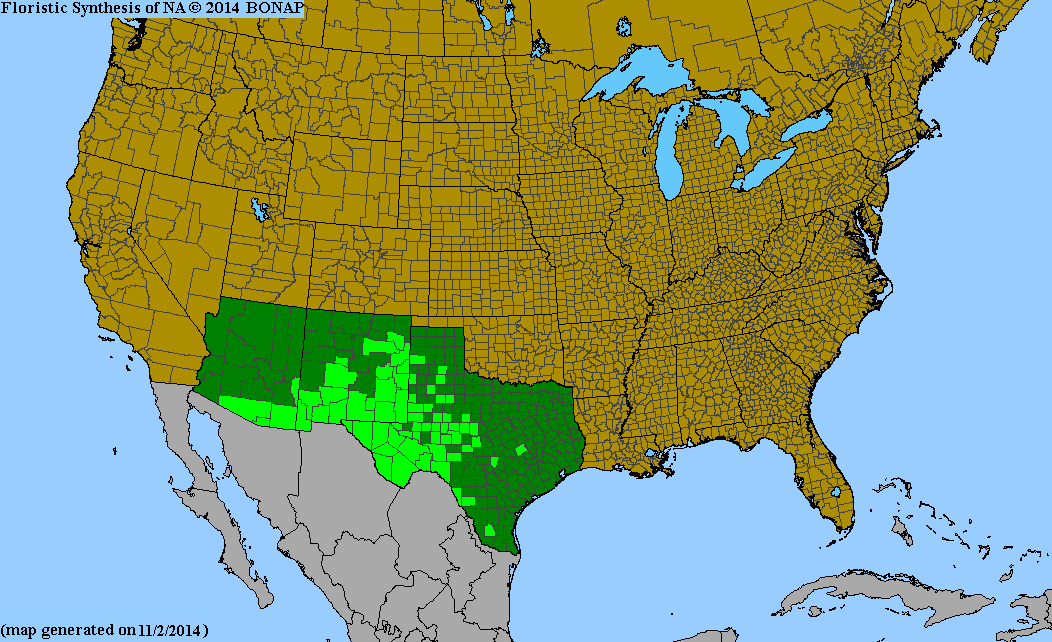 Map Color Key |
Texas Status: Native |
Banner photo of Castilleja indivisa and Lupinus ssp. taken along FM 1323 north of Johnson City, Blanco County
© Tom Lebsack 2025
Every attempt is made to provide accurate, up-to-date, and relevant information, but the completeness or accuracy of any information presented on this website cannot be guaranteed. I use authoritative references to insure high standards of accuracy and review and update the information frequently.
